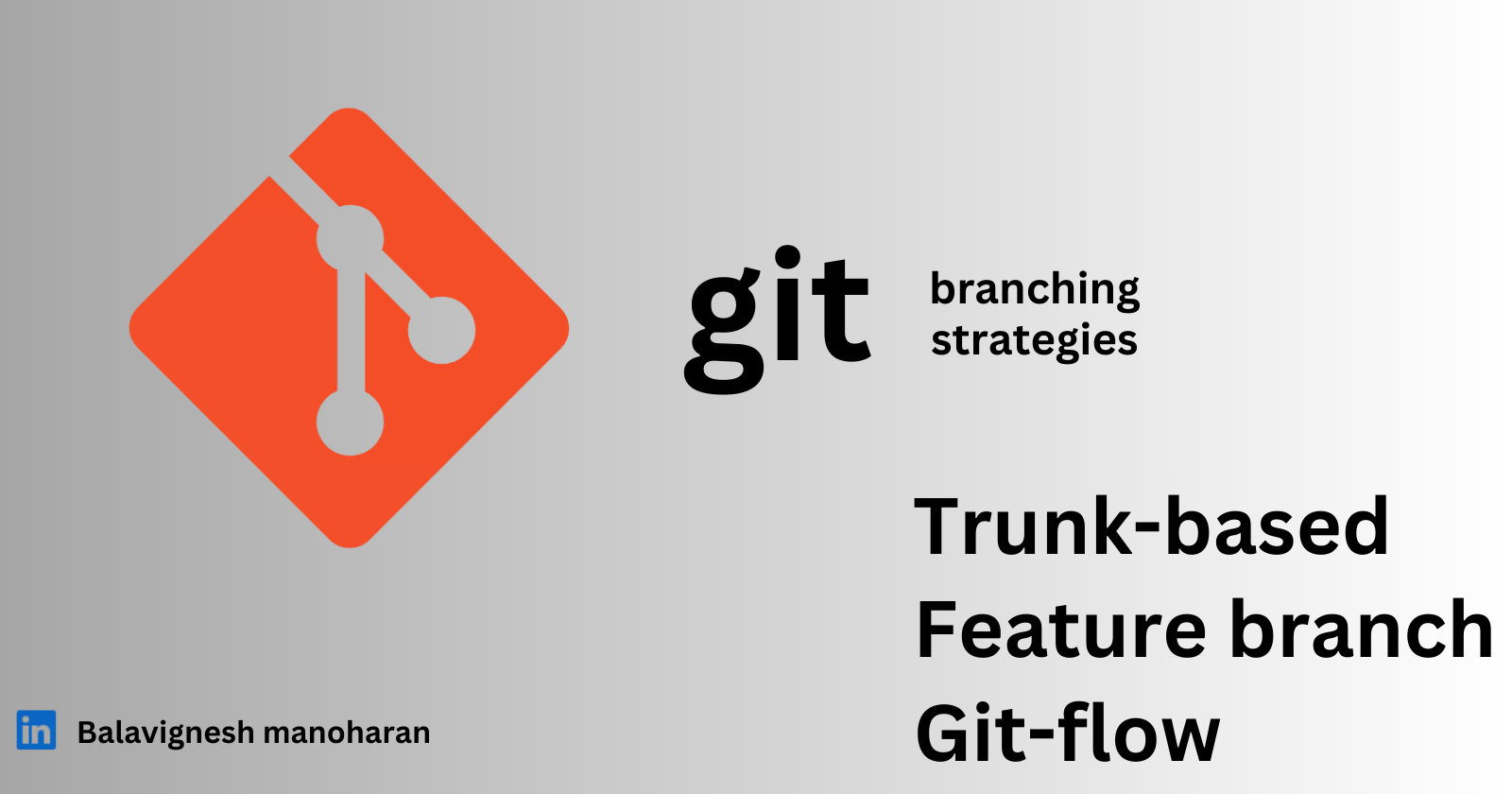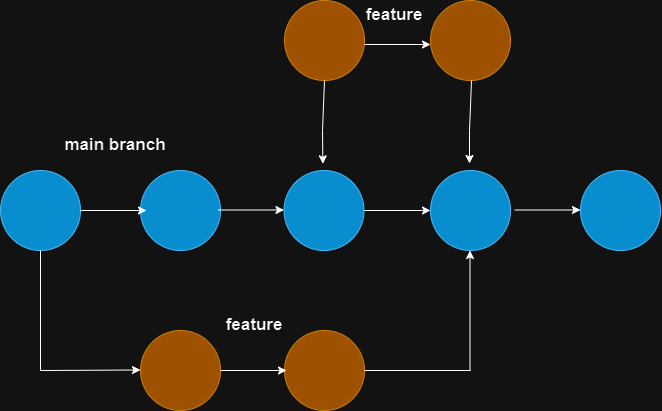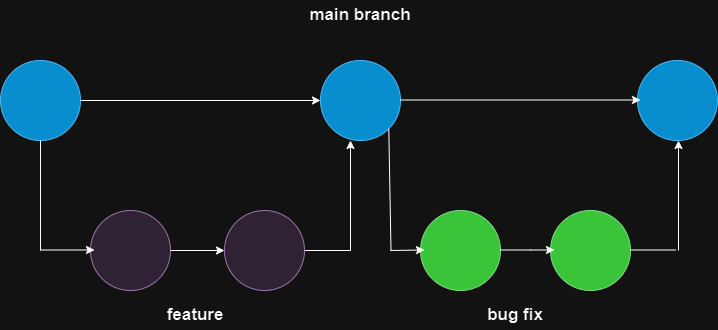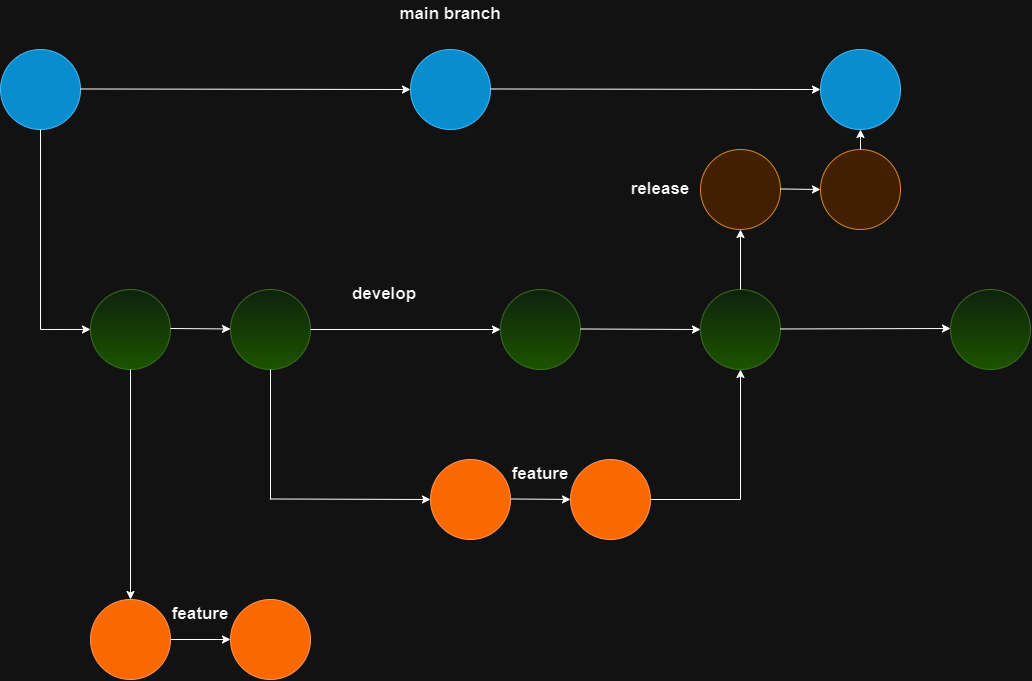Git Branching Strategies: How to Choose the Best One
 Bala
Bala
A Git branching strategy enables developers to work together on a project, keeping track of changes and managing different versions of the codebase. Various Git branching strategies exist, each with its own pros and cons. The ideal strategy depends on the specific needs of the project and team.
Why should you use Git Branching Strategies?
Using branching strategies, it facilitates collaboration on a project by preventing developers from interfering with each other's work.
Some of the goals of the strategies include:
Enhance productivity through proper coordination among developers.
Enable simultaneous development.
Maintain a bug-free code, allowing developers to quickly implement the fixes into production without disrupting the workflow.
In this section, we will discuss three common Git branching strategies:
Trunk-Based Development
Feature Branching
Git Flow
Strategy 1: Trunk-Based Development
Trunk-based development (TBD) is a branching strategy in which all developers make changes directly on the main branch, commonly referred to as the trunk, which holds the project’s deployable code.
If a coding task takes a long time, possibly spanning several days, the developer can create a branch from the main codebase, make the required changes, and then merge it back into the main codebase once development is finished. However, the aim of trunk-based development is to reduce the need for feature branches and promote collaborative work on the main codebase as much as possible.

Pros:
1. Encourages collaboration and rapid feedback.
2. Promotes early issue detection and quick resolution.
3. TBD reduces merge conflicts because developers are constantly merging their changes into the trunk branch.
Cons:
1. Single point of failure if main becomes unstable.
2. Can be difficult to roll back changes once integrated into main .
Suitable For: Trunk-based development is suitable for projects with small teams, short release cycles, and a focus on delivering new features and improvements quickly.
Strategy 2: Feature Branching
Feature Branching is a popular workflow that includes making a new branch for a particular feature or code change. This lets developers work on the feature separately without impacting the main branch. Once the feature is done, it can be merged back into the main branch using a pull request. The pull request enables other team members to review the changes and propose adjustments before merging the feature into the main branch.

Pros:
1. Allows parallel feature development.
2. Ensures consistent stability of the main branch.
3. Feature branching makes it easy to roll back changes if something goes wrong.
Cons:
1. Feature branching can slow down development because it requires developers to create and merge branches frequently.
2. Can lead to conflicts due to branch dependencies.
Suitable For: Feature Branching is commonly used in collaborative software development environments where multiple developers are working on different features or tasks concurrently.
Strategy 3: Git Flow
Git Flow is a branching strategy that involves two main long-lived branches - main and develop - which exist throughout the project's lifespan. It also includes several short-lived branches - feature, release, and hotfix - that are created when necessary to manage the development process and removed once their purpose is fulfilled. The main branch contains stable, production-ready code, while the develop branch is where all development occurs. Feature branches are for creating new features or modifications, release branches prepare for new releases, and hotfix branches swiftly address critical issues in the production code.

Pros:
1. Provides clear structure for managing code changes.
2. Encourages use of short-lived feature, release, and hotfix branches.
3. It reduces the time it takes to release new features and bug fixes.
4. GitFlow encourages feature-based development by providing a separate branch for each feature.
Cons:
1. Can be more complex than other branching strategies.
2. Requires a certain level of discipline and adherence to process.
3. Merging changes into the develop branch before release can slow down development in the GitFlow strategy.
Suitable For: Git Flow is particularly well-suited for larger development teams that are working on complex software applications with long development cycles and multiple releases.
Summary:
Trunk-Based Development focuses on regular integration and testing on the main branch for enhanced collaboration and continuous delivery. Feature Branching Involves creating distinct branches for specific features or modifications to enable isolation, testing, and review before merging into the main branch. Git Flow expands on Feature Branching by introducing extra branches for release and hotfix management, offering a structured method for handling diverse changes in larger teams or complex projects.
If you found this post useful, give it a like👍
Repost♻️
Follow Bala for more such posts 💯🚀
Subscribe to my newsletter
Read articles from Bala directly inside your inbox. Subscribe to the newsletter, and don't miss out.
Written by
